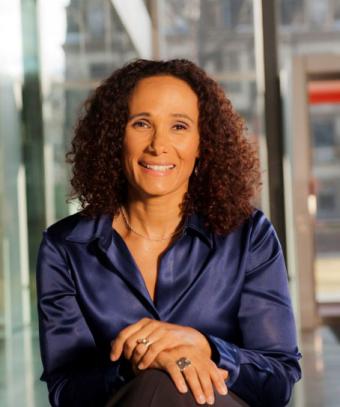PROVIDENCE, R.I. [Brown University] — In a series of academic lectures and workshops next year, Brown University will undertake an extended campuswide examination of structural racism in the United States — its origins and manifestations. The sessions, sponsored by the Office of the Provost in collaboration with the Center for the Study of Race and Ethnicity in America (CSREA), will launch on Wednesday, Dec. 2, 2015, and will continue through the spring semester and into the fall.
“Conversations about race and racism are often fraught by a lack of understanding and historical knowledge,” said Brown Provost Richard M. Locke. “By delving into the forces that operate around and perpetuate racism, we seek to become better equipped to foster productive discussion, deepen awareness, and promote a more just society.”
Tricia Rose, professor of Africana studies and director CSREA, will direct the project titled “How Structural Racism Works,” which is built around her new research project of the same name that embraces video material and public engagement as integral parts of the research design.
Rose will lead the first session, which introduces the lectures and workshops, on Wednesday, Dec. 2, 2015, at 5:30 p.m. in Martinos Auditorium at the Granoff Center for the Arts. During the spring and fall 2016 semesters, Rose will develop workshops and lectures on five key areas that sustain and propel structural racism: housing, education, wealth, criminal justice, and mass media. These lectures and workshops will invite faculty collaborations and create original research opportunities for students. The session on education, scheduled for the spring semester, will include a focus on how structural racism works on U.S. college and university campuses.
All sessions are free and open to the public, but advance registration is required.
The Wednesday, Dec. 2, session will be simulcast to Carmichael Auditorium in the Building for Environmental Teaching and Research.
About the Project
Structural racism — the normalized and legitimized range of policies, practices, and attitudes that routinely produce cumulative and chronic adverse outcomes for people of color, especially black people — is the main driver of racial inequality in America today. This project explores how five key drivers of structural racism — housing, criminal justice, education, wealth and media — form a flexible, highly connected apparatus.
Racial discrimination in housing, for example, reinforces and exacerbates educational and economic discrimination. In turn, this enables and normalizes inequities in health, wealth, and employment, which leaves racially marginalized people exceptionally vulnerable to predatory lending, aggressive policing and draconian levels of imprisonment. This project argues that understanding structural racism requires not only grasping the details of specific inequalities as they take place in a given area, but also seeing how these inequities interlock, propel, and reinforce each other.
Spring 2016 Series
How Structural Racism Works | Housing
Housing discrimination is a linchpin of racial inequality in America, shaping and exacerbating inequality in education, health, policing, wealth, and many other areas. A variety of racially discriminatory housing-related policies and practices throughout the 20th and into the 21st century have contributed significantly to persistent racial discrimination and segregation and its various interlocking consequences.
How Structural Racism Works | Wealth
The racial wealth gap is staggering — it quadrupled between 1984 and 2007 — and deeply impacts many related aspects of racial inequality and discrimination in society. The wealth gap also dilutes the effects of marginal progress in other areas of racial inequality, as inter-generational wealth transfers preserve disparities from decades past. This discussion will focus on the specific forces that have created this wealth gap and the ways it impacts other key aspects of American society.
How Structural Racism Works | Education
Despite the victories of Brown v. Board of Education and the other efforts that followed, racial educational segregation and a wide range of related disadvantages continue to define American schools. Educational segregation has grown worse since the 1990s, and during the last 15 years schools with a growing percentage of black students have gotten significantly poorer. Educational inequality is both a product and a driver of other forms of structural racism.
Fall 2016 Series
How Structural Racism Works | Criminal Justice
Through its laws, courts, prisons, police profiling, and private-sector influences, criminal justice in America propels and normalizes a system based on racial criminalization that creates and reproduces circumstances caused by inequalities in other spheres. This discussion will look closely at both overt forms of discrimination in criminal justice and the more insidious, quieter forms of racial control that often permanently marginalize those they ensnare.
How Structural Racism Works | Mass Media
A highly consolidated mass media perpetuates and disseminates normalized widespread racial perceptions and beliefs and often obscures, misrepresents, and ignores the realities of structural racism. News outlets teach broad audiences about what a criminal looks like, how and why race matters, and who is valuable and worthy of our collective empathy and support. Popular culture also trades on these warped conceptions, relying on decontextualized ideas of “the ghetto” and “the hood” — what goes on there, who lives there and why. In this sense, mass media — through the stories it both does and does not tell — obscures and reinforces the workings of other forms of structural racism and reduces the public’s knowledge about and will to fight racial inequality.

